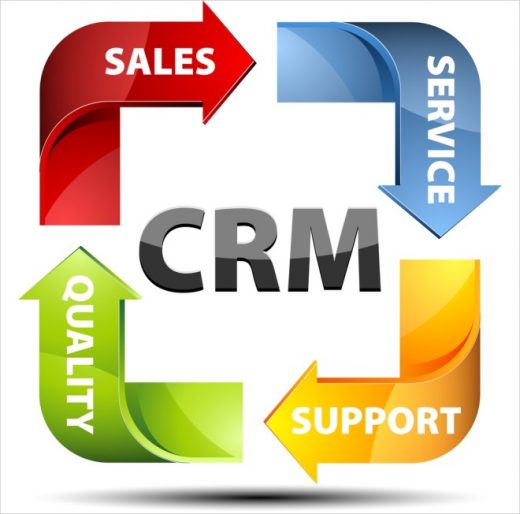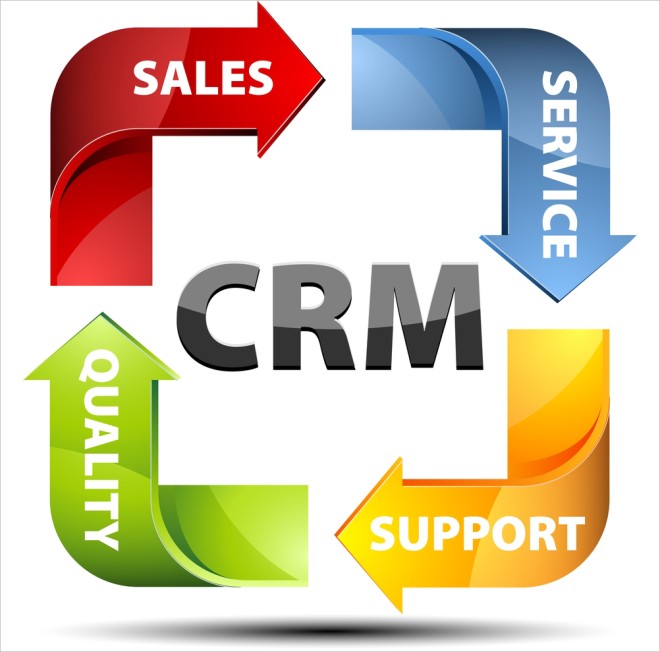12 Reasons Your CRM Implementation Will Fail
June 17, 2016
Is Your CRM Implementation Destined to Fail?
No one undertakes a CRM implementation with the intention of failing.
A little research turns up CRM failure rates as high as 63%, however.
So why is CRM success so elusive? Here are 12 common problems that lead to CRM failures:
1. Lack of Vision
A successful CRM implementation begins with clearly defined objectives. What problems are you addressing? What specific, measurable goals are you trying to reach? Where do you want your company to be as a result of your project? Your vision establishes the purpose of your project and guides your strategy.
It is impossible to achieve goals that haven’t been clearly established. Start with the end in mind.
2. Poor Planning
A formal strategy is a critical component of any successful CRM implementation. Having a well-designed plan seems obvious, but lack of planning is often cited as one of the top reasons for CRM failure.
To start, track the movement of a lead through your organization as it travels from suspect to prospect to customer. Map each stage of your customer cycle to its owner to identify stakeholders. Determine each department’s needs by meeting with stakeholders.
You can then work on creating a prioritized set of detailed initiatives and corresponding actions that will make up your plan. Identify the people responsible, create a timeline, and establish key metrics.
3. Scope Creep
Gathering requirements, evaluating feedback, creating estimates, and scheduling important project dates are all vital parts of the initial planning. With all the moving parts and input from multiple sources, scope creep and analysis paralysis can set in.
The project sprawls to where there’s too much analyzing and not enough action. The standstills, back and forth, and focus shifts lead to your project grinding to a halt and failing.
Scope creep and overanalyzing often seem like they just happen naturally. Both can be avoided during the planning phase by creating a scope statement and having all stakeholders sign off on it. Your implementation moves forward faster when you know what falls within and outside of the project scope before the project starts.
4. Approaching CRM as a Technology Only Solution
CRM is not strictly an IT project. While software has become an integral part of successful CRM implementations, software is merely a tool.
CRM is an enterprise-wide effort to improve customer-facing business processes in order to meet company goals. CRM is a culture change that impacts the way every employee who comes in contact with a customer does their job. It can only be approached as such.
That means change has to be recognized as necessary and accepted in every customer-facing department and at all levels of the company. That also means the people who will be using the system need to be involved in all phases of the implementation. Forcing employees to use whatever software and processes IT has chosen for them is a downhill path to failure.
5. Too Much at Once
Trying to do everything at once guarantees that you won’t do any of it well. You end up with chaos and confusion rather than the more efficient business processes you imagined at the outset.
Divide your implementation into phases to make the project more manageable. You can work on multiple aspects of your implementation at the same time. Just don’t try to complete the entire enterprise-wide implementation all at once.
6. Lack of User Adoption
For your organization to enjoy the benefits any new technology offers, your people have to use it. CRM is no different. Employees not using the system means you’re not capturing data at key points in your customer cycle.
Convincing salespeople to focus on something other than selling is often difficult. Some might view CRM software as a tool for managers to monitor daily activity or see who’s not hitting their targets. Others could be married to the tools they’re familiar with and try to continue using them.
Finding ways to motivate your team to adopt new processes and use new tools is absolutely necessary for a successful implementation. But how do you do that?
First, users need to be convinced that their old data will still be available, that the new product is easy to use, and that training will be provided. Let them know that you understand that there will be a transition phase and that it takes time to get up to speed.
You also need to articulate the problems it solves for them as well as the benefits it offers to them. Users don’t care about the benefits CRM systems offer to management so leave those out. Focus on how your chosen solution will automate their processes, save them time, and generate bigger deals.
7. Lack of Training
Training is vital to the success of any CRM implementation strategy. It’s unrealistic to force a new process or software application on your team then expect them to be productive right away without structured training.
Find out how much training is available from your software provider and how it’s delivered. To get the most out of your investment, make sure your users get sufficient straining before and after implementation.
8. Lack of Support
All CRM software providers claim that their software is a snap to configure and child’s play to use. But you can’t just fire up the software and start watching your profits soar. There will be questions that need answers and issues that need resolving.
Is support available 24/7 or only during certain hours? How is support provided? How difficult or costly is it to speak with a live person?
Know what kind of support resources are available to you before you need them. Find a vendor whose support offerings match your needs.
9. Wrong Technology Vendor
You shouldn’t have to modify your business processes to fit your software, but that’s precisely what some CRM software vendors force you to do. You have to use their preconfigured sales process, their terminology, and their data format. You’re faced with having to spend tens of thousands to adequately customize the software.
Sometimes you end up with a stripped down version of a product designed with someone else in mind. Or you end up paying for a boatload of features you don’t need.
You can avoid picking the wrong software by clarifying your needs before you go shopping for a new provider. Questions to ask yourself include:
- What are the must have features?
- Is the application flexible enough to customize on your own?
- Is the application scalable or could you outgrow it?
- Does it integrate with the tools you already use?
- How easy is it to get started?
- Can you demo the product?
- How much help is available?
- How long has the vendor been in business?
Determining which vendor best suits your business requires a strategy. Simply picking the cheapest or the most popular software probably won’t get you where you want to go without major headaches. Understand what you need, know what each vendor offers, and try before you buy.
10. Overly Complicated
In many organizations, the people who use the CRM system the most are not technical people. If you choose a program that your users don’t find intuitive or simple to use, they’ll find ways to avoid it. You’ll lose valuable data and your business will suffer.
11. Lack of Measurable Objectives
It’s important to define how you’ll measure success before your project kicks off, but sometimes benchmarks get overlooked. It’s difficult if not impossible to succeed with anything you’re not measuring.
Sometimes objectives are set without a clearly defined process for measuring them. Vague targets have about the same value as no targets.
One of your goals in launching your CRM initiative might be to improve relationships with your customers. It’s a reasonable goal, but not one that is inherently measurable or specific enough.
How will you measure customer relationship improvement? Are you looking for a decrease in complaints, shorter transaction times, or some combination of factors? You have to know what you’re looking for and how to collect it before you implement a new system.
12. No Executive Buy-in
Having executive leadership establishes commitment and encourages collaboration between departments. Without executive support, your project is likely doomed from the start.
You can secure executive buy-in by tying your CRM strategy to the overall company strategy and to the bottom line. You get executive buy-in if you can demonstrate that your CRM initiative will drive growth by resulting in better customer retention, more effective marketing, more sales opportunities, and lower costs.
If you want to keep executive buy-in throughout the life of your project, involve senior management in assessing needs and choosing a software vendor. You’ll also have to deliver results to keep that buy-in so establish a reporting and feedback process.
Avoiding Failure
CRM implementations fail at a high rate, but failure is avoidable with the right approach. CRM is not a one-time project. It’s an ongoing journey that requires vision, strategy, and commitment to be successful.
Business & Finance Articles on Business 2 Community
(75)




